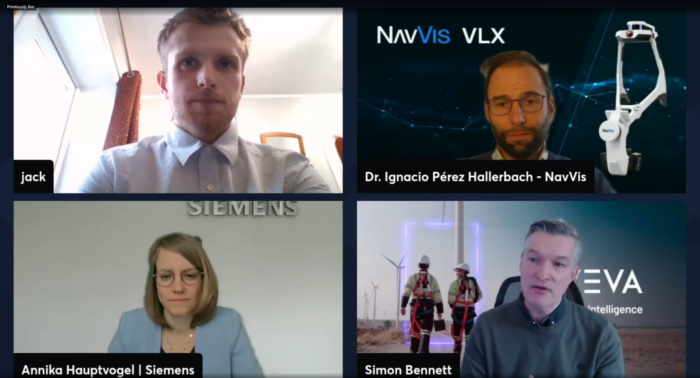Introduction
The Digital twin market size can be divided into several categories. Digital twin software providers act as the core providers in the market, supplying the software and tools for individuals, companies, and enterprise users to operate digital twins. Similarly, educational institutions, such as universities and governments, are starting to invest in digital twin technology.
Thus, the market is rapidly growing, and the industry’s current state looks promising as we look to the future. This article will dive into the digital twin market size, factors impacting market growth, key market players, and future trends for the industry, providing a holistic view of the market.
Market Size Overview
As mentioned above, the digital twin market size is growing daily. Although the concept of a digital twin is not new, the underlying technology behind creating exact digital replicas of physical counterparts has rapidly developed. Software providers such as NVIDIA are in charge of making digital twins better and more sophisticated by integrating advanced technologies such as artificial intelligence and big data.
Due to the industry’s rapid technological progress, the digital twin market has consequently been growing in tandem with new software providers, end users, and investors taking an interest in the technology.
Utilizing our proprietary market intelligence platform, market experts predict that the digital twin market will generate $110.1 billion in revenue by 2028. Although the market size growth figures differ depending on who you ask, the industry’s growth is unquestionable, with Google trends showing constant growth.
Over the last twenty years, we have seen a continuous but steady increase in traction behind digital twins. These numbers have numerous implications for the industry, with the expected growth coming from the increased use of twins across sectors and technological improvements, such as greater interoperability.
Factors Driving Digital Twin Market Growth
Several factors are driving the market’s growth. Firstly, there is an increased usage of digital twins across sectors. Specifically in industries such as healthcare, digital twins are becoming rapidly adopted by organizations looking to bolster their operational efficiency. An example is the United Kingdom National Health Service (NHS), which is trialing digital twins within its practices.
The NHS is developing a digital twin heart named CVD-Net to treat pulmonary arterial hypertension (PAH) in partnership with leading universities, such as the University of Nottingham. Use cases like these drive industry growth and attract company and investor investment.
Secondly, technological improvements and investments by major providers, such as NVIDIA, are pushing the industry forward with software advancements to platforms such as NVIDIA Omniverse. These refinements facilitate improved digital twins that, in turn, develop better use cases, consequently bringing investment into the industry. Likewise, these developments increase investor confidence and spending, further causing the digital twin market size to grow.
Thirdly, we are seeing an increase in software providers in the market, with new providers developing digital twin software for users to use in their organizations. An upsurge in providers creates greater competition, driving the industry forward in innovation and market growth. Finally, enterprise users are adopting digital twins more rapidly, with these large companies investing in the market.
Digital Twin Market Segmentation
The digital twin market can be segmented into the following:
Digital Twin Providers
Companies such as Ansys and NVIDIA are examples of providers that develop digital twin software and platforms.
Investors
Investors invest in the underlying technology through startups, providers, and other institutions, growing the digital twin market size.

Enterprise Users
Enterprise users are large enterprises or companies that use digital twin software. Examples include Nestle, Ford, and BMW.
Universities
Universities like the University of Nottingham and Imperial College London are developing digital twins and working with providers on research.
Governments
Governments are fundamental parts of the market, investing in digital twin technology to support startups and organizations developing it within their territories. An example of this is the UK’s National Digital Twin Programme (NDTP).
Use Cases Of Digital Twins
Digital twins have numerous use cases. Due to the sheer number of them, we can only cover some of them in this article. As mentioned earlier, digital twins are significantly influencing healthcare. For example, twins are being used to develop digital hearts for athletes to assist in training. Specifically, in collaboration with runner Des Linder and Tata Consultancy Services, Dassault Systems has integrated AI with machine learning to develop a twin that tracks heart performance and health.
Furthermore, these technologies are also being widely used within the industrial sector, with providers and enterprise users such as Siemens developing full-blown digital twins for Freyr, the well-known battery manufacturer. Siemens has created a digital twin of a Freyr battery cell and the factories that build them to reduce energy consumption.
Another interesting use case is the development of digital twins for research. For example, researchers have found that digital twins are starting to be used in the predictive maintenance of water treatment, aiding in treatment optimization.
Key Market Players
1. NVIDIA
NVIDIA, known for its literally game-changing graphics cards, such as the RTX 40 series, is one of the main software providers of digital twins. NVIDIA has developed its own proprietary digital twin development platform, known as NVIDIA Omniverse. Omniverse enables users to build fully realized digital twins and virtual environments that are exact replicas of their physical counterparts.
The platforms allow users to create 3D workflows using Universal Scene Description (USD) as a standard for creation, ensuring interoperability. Those wanting to build realistic digital twins can use NVIDIA Omniverse for simulation and training.

2. Siemens
Siemens is another provider of digital twins and a key market player within the industry, expanding the digital twin market size. Coining the term ‘industrial metaverse’ to suit its immersive technology product suite focused on digital twins, the industry giant works with companies globally to build digital twins. Freyr, the battery company mentioned in the last section of this article, is just one example of this, with Siemens working with the likes of Nestle and AWS to develop twins.
3. AVEVA
AVEVA is known for its groundbreaking work building digital products for industrial use cases. AVEVA works closely as a provider to develop digital twins while acting as a service provider with its intelligence platform, CONNECT, to provide software solutions and link companies to bespoke providers of digital twins. AVEVA is a prominent market player under the recognized umbrella of Schneider Electric, also leading in the market, driving digital twin market size.

4. Bentley Systems
Bentley Systems is a well-known provider of digital twin technologies. The company specializes in building bespoke software for industrial purposes. Bentley Systems, with its iTwin platform, offers users digital twin solutions. Built on open APIs, those accessing the platform can have near-instant access to large data sets that aid in developing twins. Users can use the platform to create and visualize digital twins while also being able to analyze them.

5. Hexagon AB
Hexagon AB is another provider of digital software. Through its various platforms, it specializes in reality capture, manufacturing, and analytics. Hexagon has partnered with NVIDIA to bring its solutions to NVIDIA Omniverse. Examples include its Smart Digital Realities solution, which captures real-time data, which is critical in creating a sophisticated digital twin. The company is working heavily with NVIDIA to build further solutions for the creation of digital twins.

Future Trends and Market Size Predictions
Future trends and market size predictions are often hard to predict due to deep tech industries’ complex and multifaceted nature. Despite this, we can confidently say that the digital twin market size will continue to grow as the use cases of digital twins become more apparent.
Likewise, we should expect to see increased levels of interoperability between different digital twin providers to ensure seamless collaboration between providers and users when building and deploying these twins. An example is the Open Alliance for USD, which looks to make Universal Scene Description a standard across industries.
It is spearheaded by prominent players such as NVIDIA, Digital Twin Consortium, and Siemens, to name but a few. Interoperability is a blocker and a critical hurdle for industry leaders to overcome when expanding and growing the digital twin market size.
Furthermore, we should expect further investment, growth, and additional companies adopting and developing twins. In line with technological development, digital twins will continue to shape how sectors operate globally.
Emerging Technologies Influencing Digital Twin Market
Digital Twin providers are starting to integrate emerging technologies such as AI and big data into their development to create comprehensive digital twins that can control entire operations, such as a whole factory. Thus, with the proliferation of artificial intelligence through ChatGPT, we expect AI to significantly impact twins’ development, making them more efficient while growing the digital twin market size.
Mixed reality is another emerging technology that is starting to be integrated with digital twins, enabling users to visualize their twins through a more immersive lens. We expect this technology and integration to get better in the future with improved immersive technology. Blockchain is another interesting example of how emerging technologies can be integrated with digital twins. Due to high levels of encryption, blockchain can make digital twins more secure.
Potential applications and industries adopting digital twins
Traditional industries will continue to embrace and double down on the applicational use cases of digital twins. Deep technology industries such as Space and Quantum are also starting to adopt the technology, with digital twins needed in military satellite operations, amongst other use cases.
Likewise, within the quantum market, digital twins can aid in developing quantum computers and assist in optimization and efficiency. We are also seeing the use of digital twins in the climate technology market, such as the European Space Agency’s mission to build a digital twin of the earth to assist in sustainability. Thus, through digital twin use cases within these industries, we will see rapid growth in the digital twin market size, aligning with the projections outlined in this article.
Conclusion
Overall, this article has provided a comprehensive breakdown of the Digital Twin market size, shedding light on the key players, entities, and use cases driving the market forward. We have also covered the future of the digital twin market size and the underlying factors driving market growth within the industry. If you are interested in this article’s digital twin market size data, check out our intelligence platform for the latest insights.

















